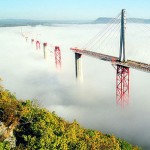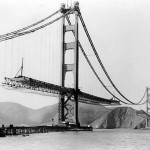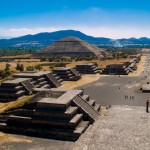As a photographer who captures rare and priceless moments, you can’t afford to have disasters during photo sessions. However, sometimes things go wrong regardless.
If you have a recovery plan in action before anything goes wrong, you’ll never have to freeze up and panic at that moment. You’ll never have to fear a photo session getting ruined.
If you psychologically prepare yourself for disasters in advance and rehearse the crisis in your mind, then you can switch to autopilot when it happens.
Let me walk you through what to do when cameras fail, families fight, or photos fall short of your vision.

Knowing that you are prepared for any disaster will allow you to banish your worry and focus on the moment.
1. Technology
If you show up to a session with only one camera and one lens, you’re asking for a disaster to happen. You should always have a backup camera with you. Even if you have no intention of using it during the session, you need to have something to fall back on.
I heard of a wedding photographer who showed up with one camera and one dead battery. The wedding was delayed for an hour while she searched around for somebody to help her find a battery. Don’t let that be you!
Instead, bring two cameras and two lenses to every photo gig (along with spare batteries). I bring a Fuji camera with a 56mm lens. It’s the only camera and lens I’m interested in using.
However, I keep a Nikon with an ultra-wide 10-24mm lens tucked in my camera bag (from before I switched to Fuji). It’s there in case I want a unique wide-angle photo. It’s also there in case of disaster.

This is the sort of photo that I would take with my spare Nikon camera and wide angle lens. A couple of nice wide angle photos like this balance out the look of the photos taken with the portrait lens.
Last spring, I timed a maternity session for the golden hour. If you’ve ever photographed during the golden hour, then you know how quickly the time passes. When the family arrived, I pulled out my camera, dialed in my settings, and then noticed with surprise that the battery was dead. ‘That’s strange; I always charge my batteries,’ I thought. I reached into my camera bag to pull out a spare battery and panicked when I realized I hadn’t brought any!
Decide right now what you’ll do when your camera stops working, or you make a foolish mistake as I did. Decide right now what your backup plan is so that when it happens, you can switch to autopilot and get the job done.
Most likely, you’ll reach for your second camera. That’s what I did.
I had no choice but to shoot the whole session with an ultra wide angle lens! It’s the last lens I would ever choose to photograph portraits.

All of the photos in this article are from the photo session with the ultra-wide lens. You can let a family down with your mistakes, or you can rise above and make whatever you’ve got work. I’ve seen enough episodes of “Pro Photographer, Cheap Camera” to know that beautiful photos can be made with nearly any camera and lens.

During one session, I was waist deep in a river. There was one camera around my neck and one in my hand. After a few minutes, I realized I had been dunking the camera around my neck into the water. Panic rushed through my head and chest – I just drowned a $ 2000 camera. But I calmly walked ashore, packed away the camera and got back to work. Nobody knew but me. I allowed the need to capture memories to overcome the panic I was feeling in the moment. I could deal with the camera later, there was a family counting on me. Decide in advance not to let your negative feelings rule you.

I’m more concerned about the people I’m photographing than the gear I’m using. Personality knows nothing about cameras and lenses, it shines whenever it wants to.
2. People
Beyond technology, other disasters can happen during your photo session.
How about a family that arrives at the photo session in miserable moods and arguing? They probably found it stressful getting ready for the photo session.
It’s uncomfortable for the photographer and might even lead to the family completely blowing up at each other.
You can get upset and stressed out (how dare they treat me like this as a professional photographer?), or you can diffuse the situation.
These scenarios can be tricky to figure out. Try to get them focusing on something else by asking questions and bringing up topics they love. Focus more on the kids first. If you can cheer them up, their excitement becomes contagious. You’ll find the moment that the tension is released, the scene turns to laughter.

Laughter is so contagious. My wife always comments that I come home from photo sessions in a better mood. It’s because there is so much laughter.
Challenging Kids
Once in a while, families bring me very challenging kids. One mom came with her non-verbal child. He didn’t take direction at all, and immediately ran off into the woods! All of the photos from that session were candid because the child didn’t sit long enough to pose. It wasn’t until he rested with exhaustion that I finally got a photo of him and his mom.
It was the first session where I thought I had failed. However, upon reviewing the photos, I discovered many wonderful moments, and the mom loved them.
You need to begin every tough situation by telling yourself, ‘there is a way.’ I now know that completely candid photo sessions are possible.

As a photographer, I prefer candid moments over posed ones. Even when posing a photo, I wait for the candid moment to appear.
Terrified Kids
I remember one little guy who was terrified of cameras. Just the sight of one sent him into hysterical tears. Beginning with the phrase, ‘there is a way,’ I built a trusting relationship with the child. It naturally led to smiles and no fear of my camera. It took a while, but it worked.
3. Photos that Fall Short of Your Vision
Every master was once a disaster – T. Harv Eker
You may feel like some photo sessions were a disaster because you weren’t happy with how the photos turned out. It is perfectly reasonable for creative photographers struggling with their vision. It’s part of how you grow as a photographer. Allow that dissatisfaction to push you harder next time. Learn from your mistakes and let them prepare you to avoid future disasters.

In the end, I learned that an ultra wide angle lens can lead to nice photos. I broke my dependency on my favorite lens. It makes me wonder what other disasters will help me grow as a photographer.
What is Your Biggest Fear?
Technology, people, and our lack of creativity threaten our photo sessions all the time. But if you create and rehearse your backup plan in advance, you’ve got much less to actually worry about.
What’s your biggest fear about a photo session going wrong? Let me know in the comments and see if we can figure out your backup plan in advance.
The post Recovering From Disasters During Photo Sessions appeared first on Digital Photography School.






















You must be logged in to post a comment.